


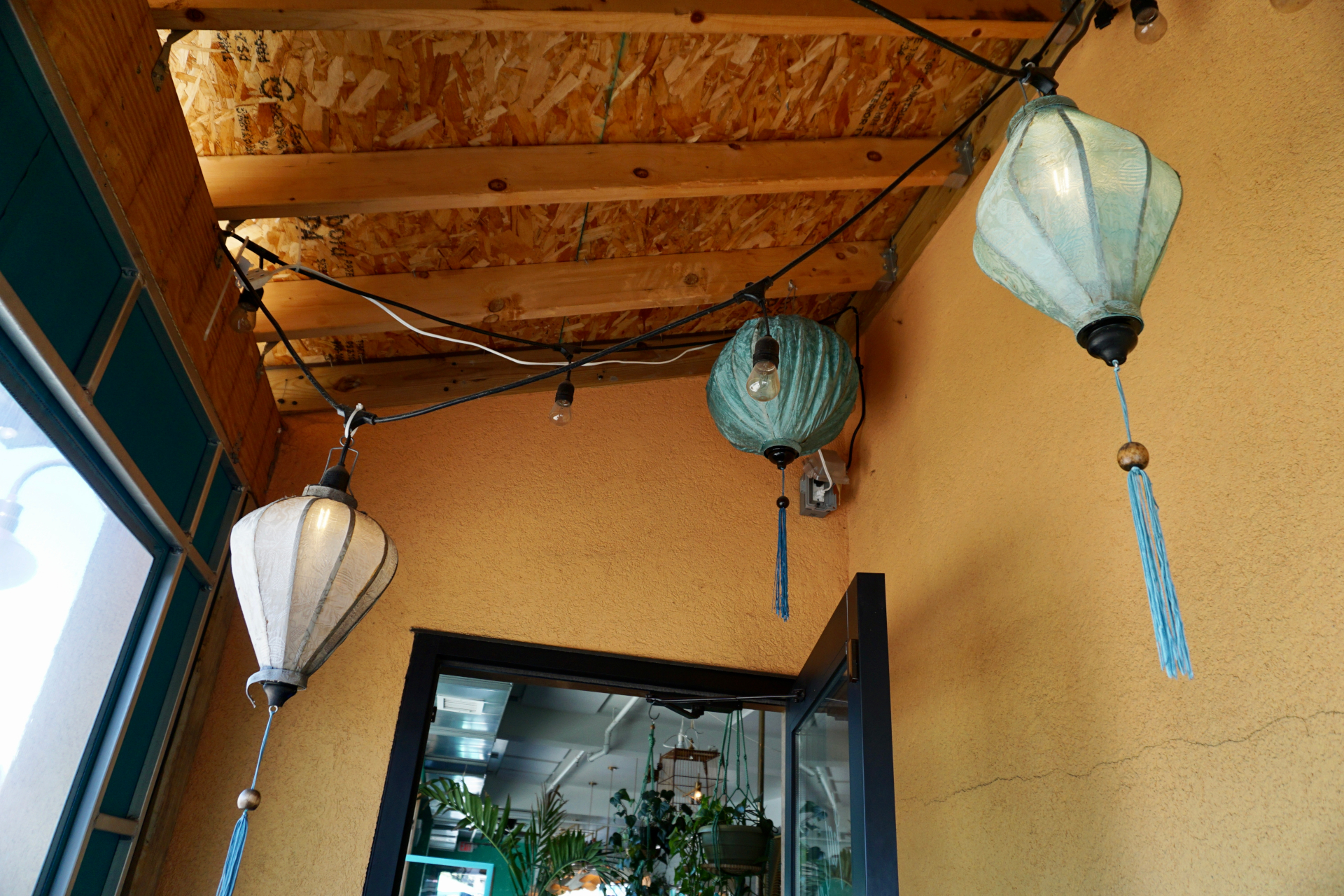
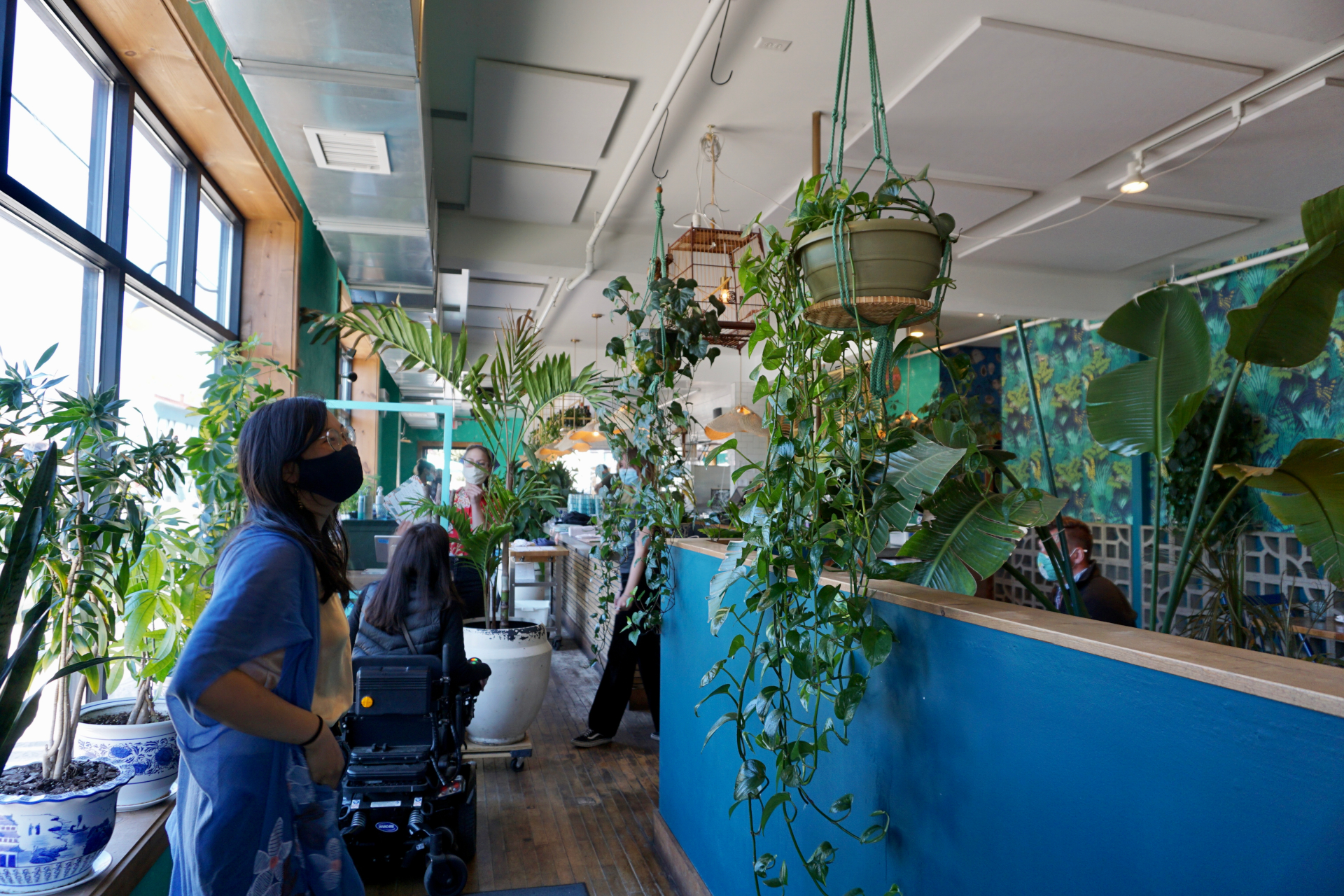


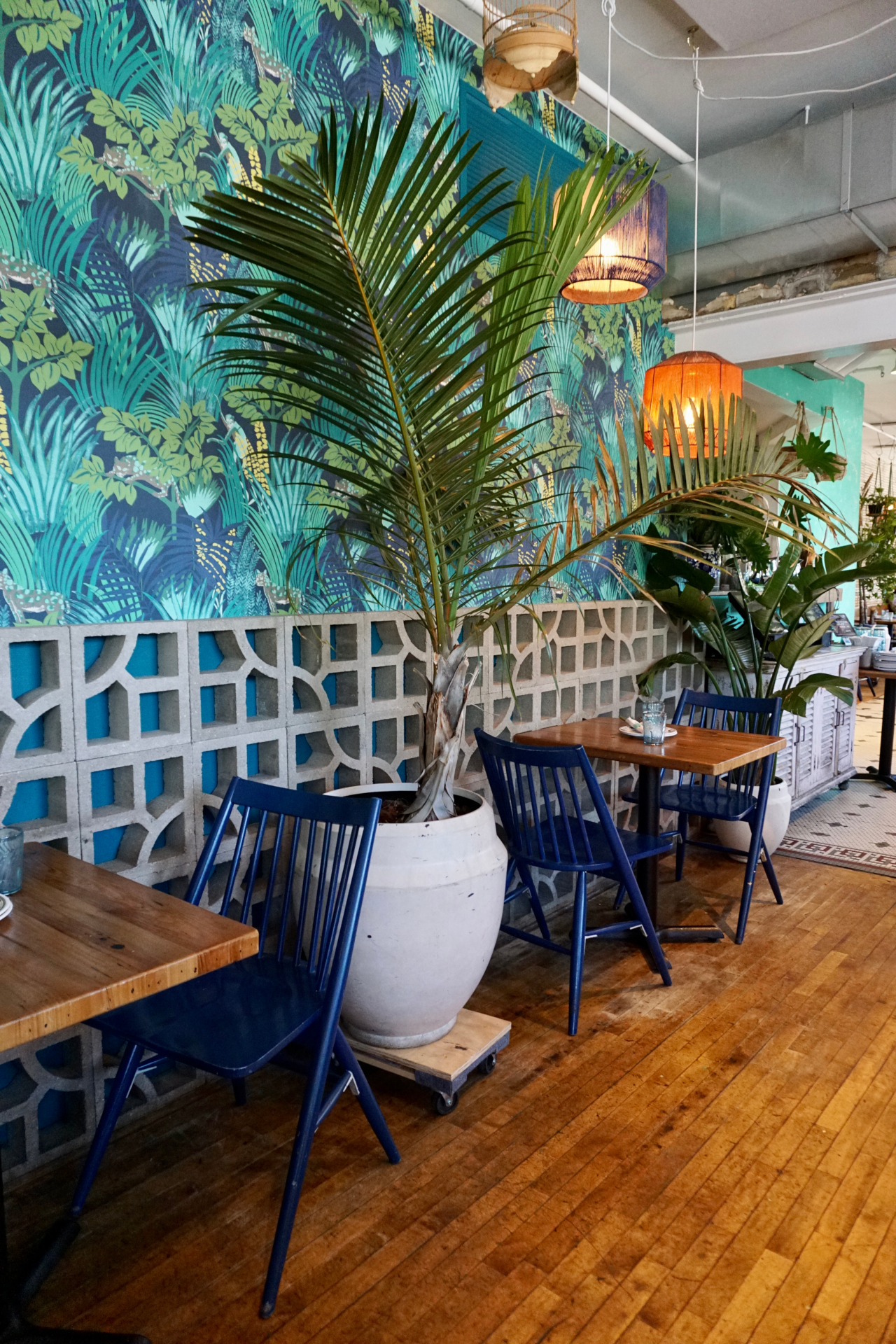
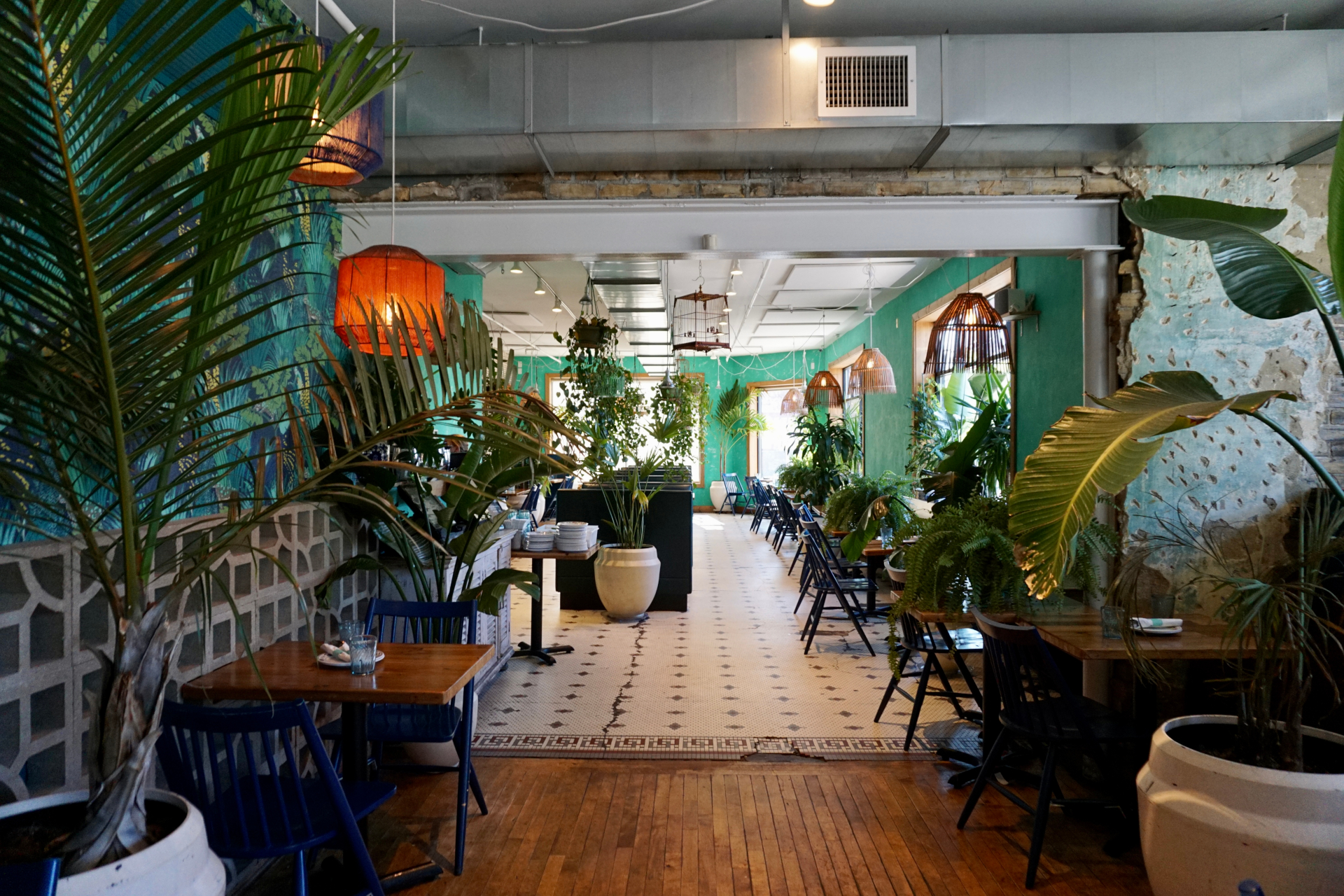
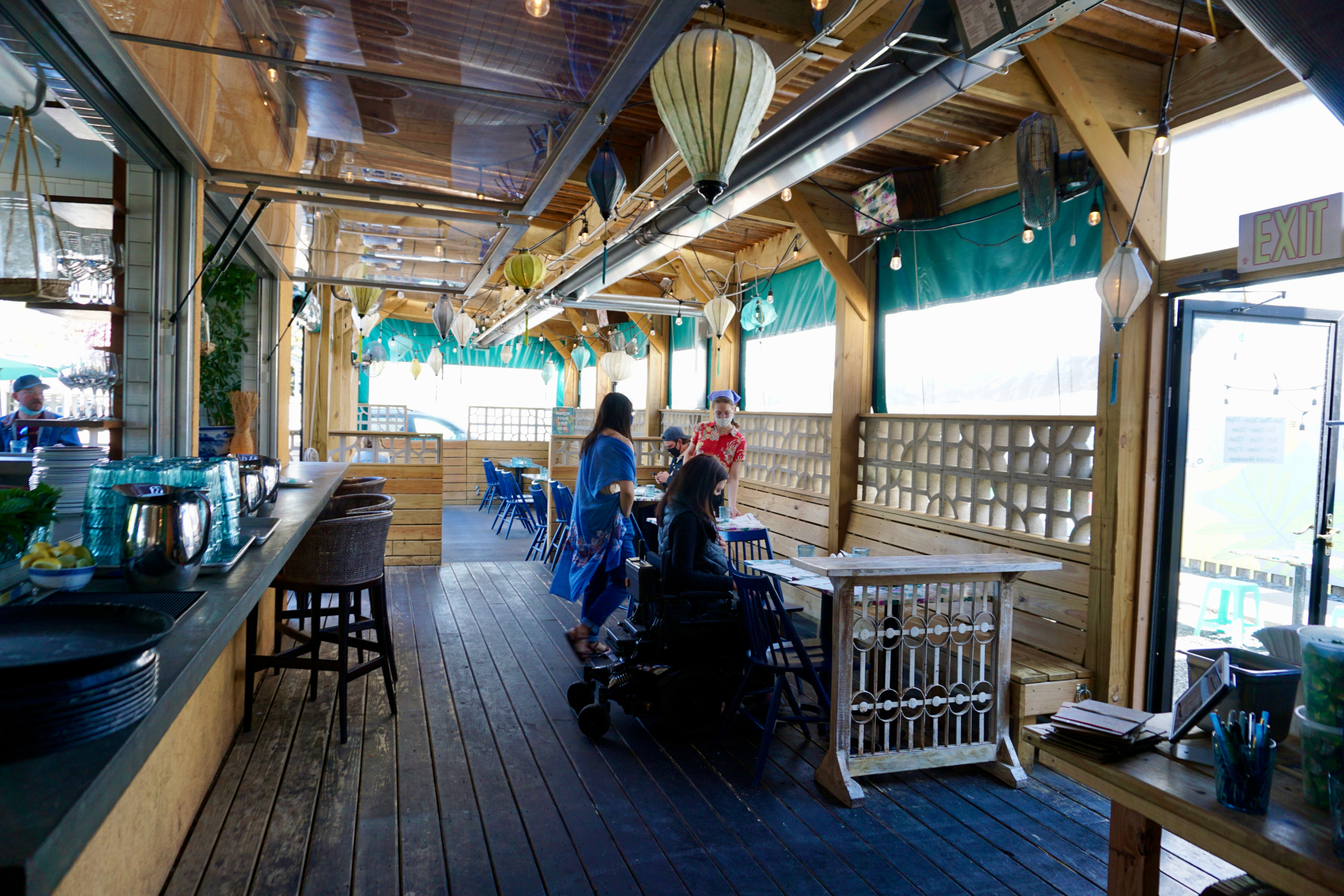
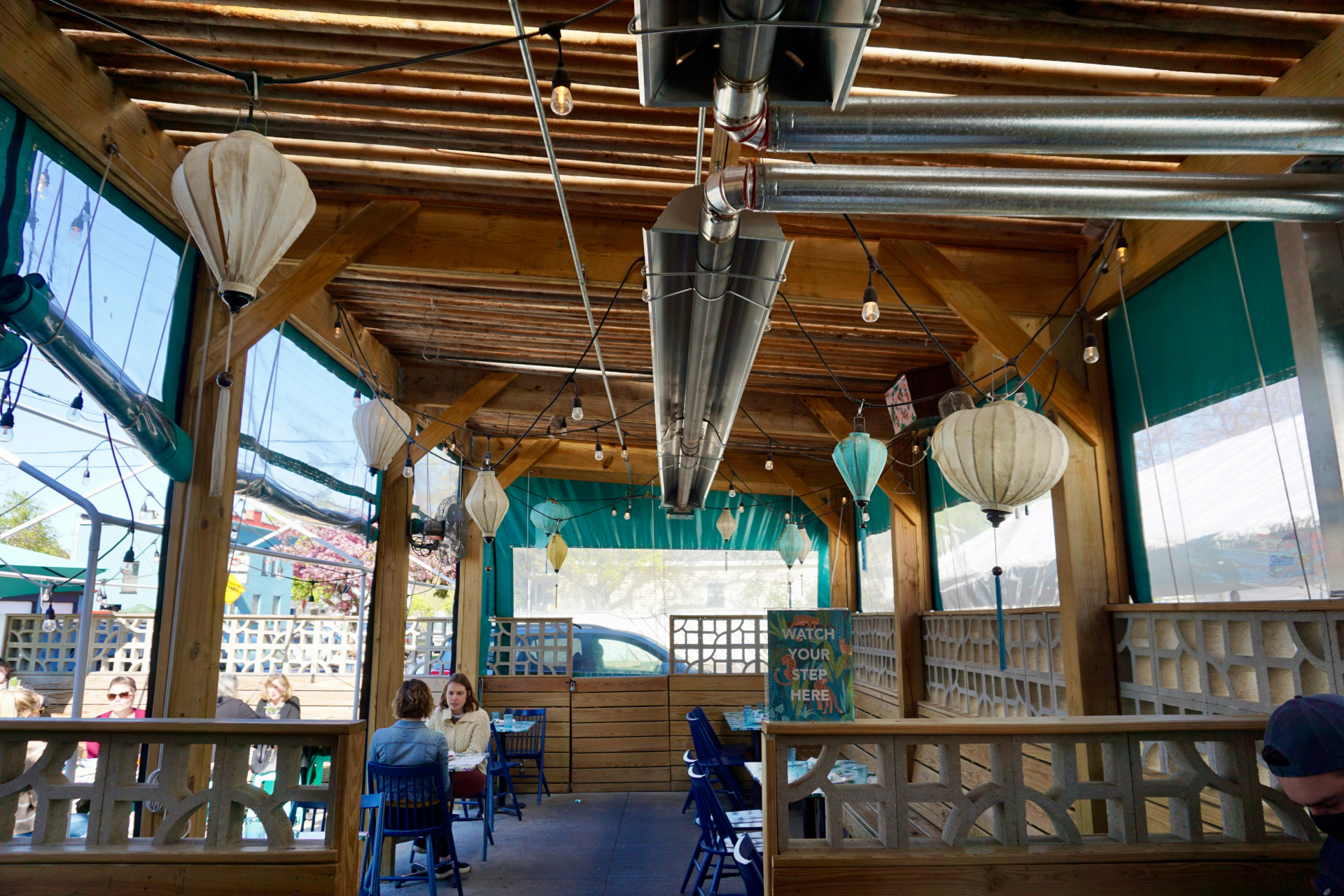
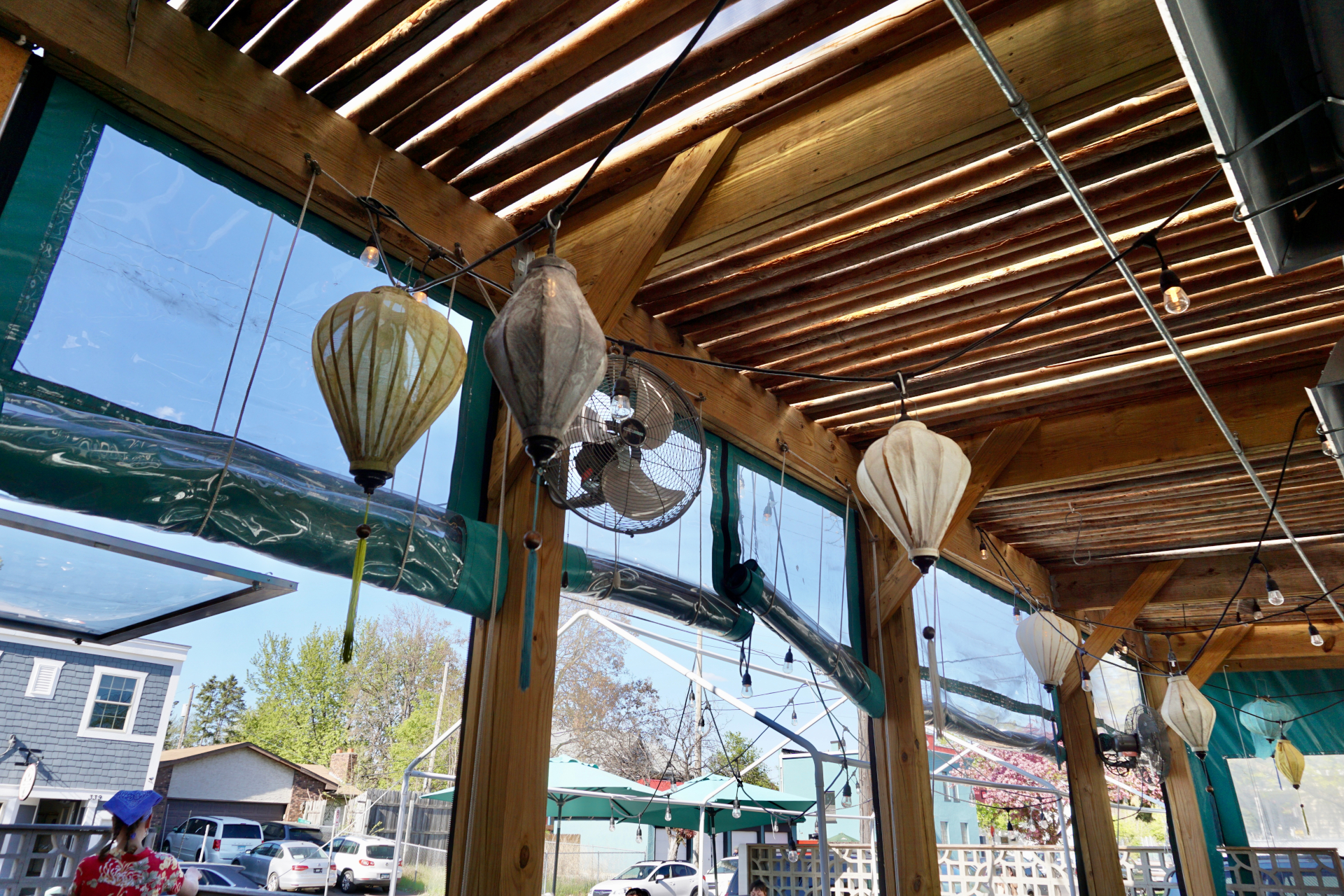
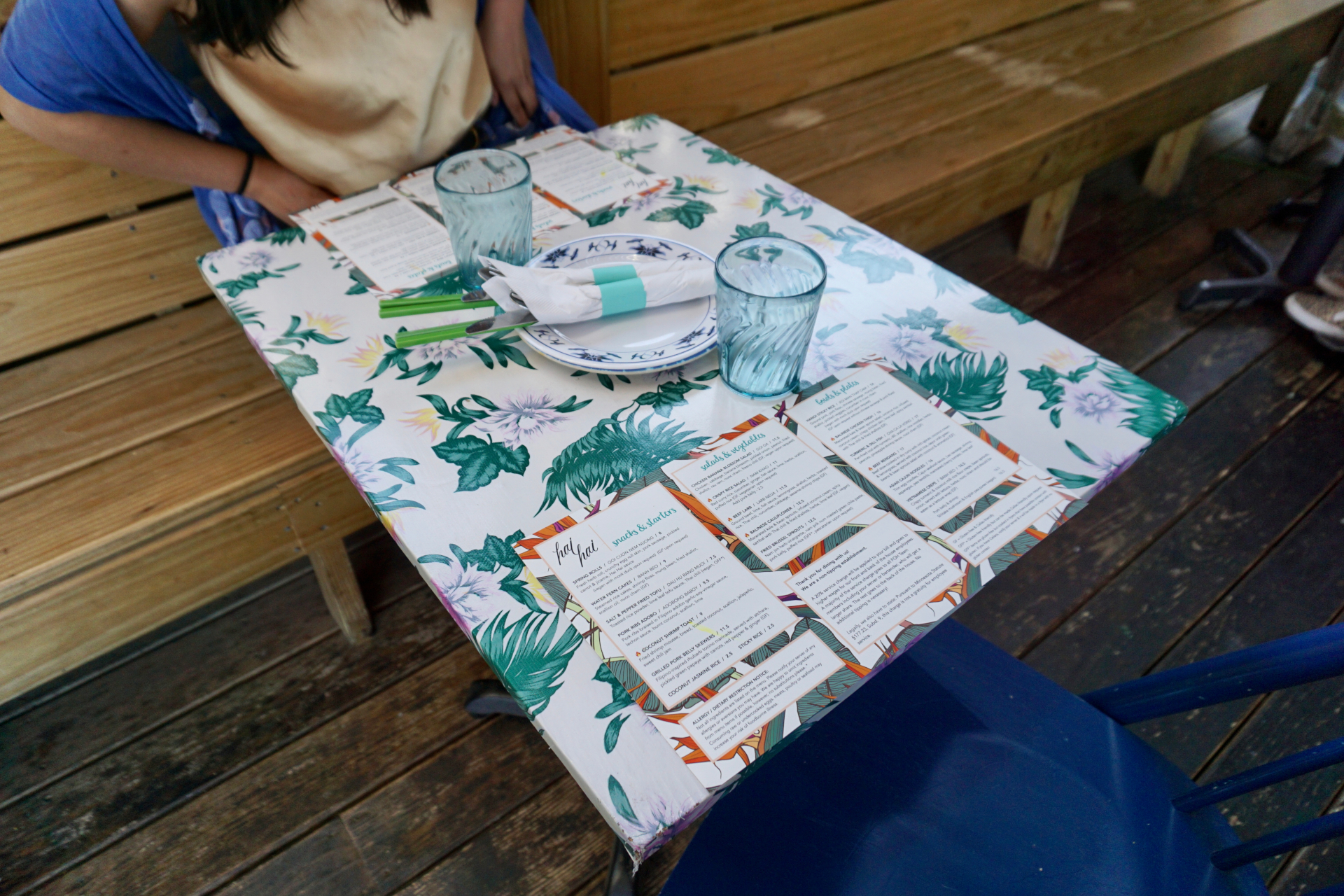
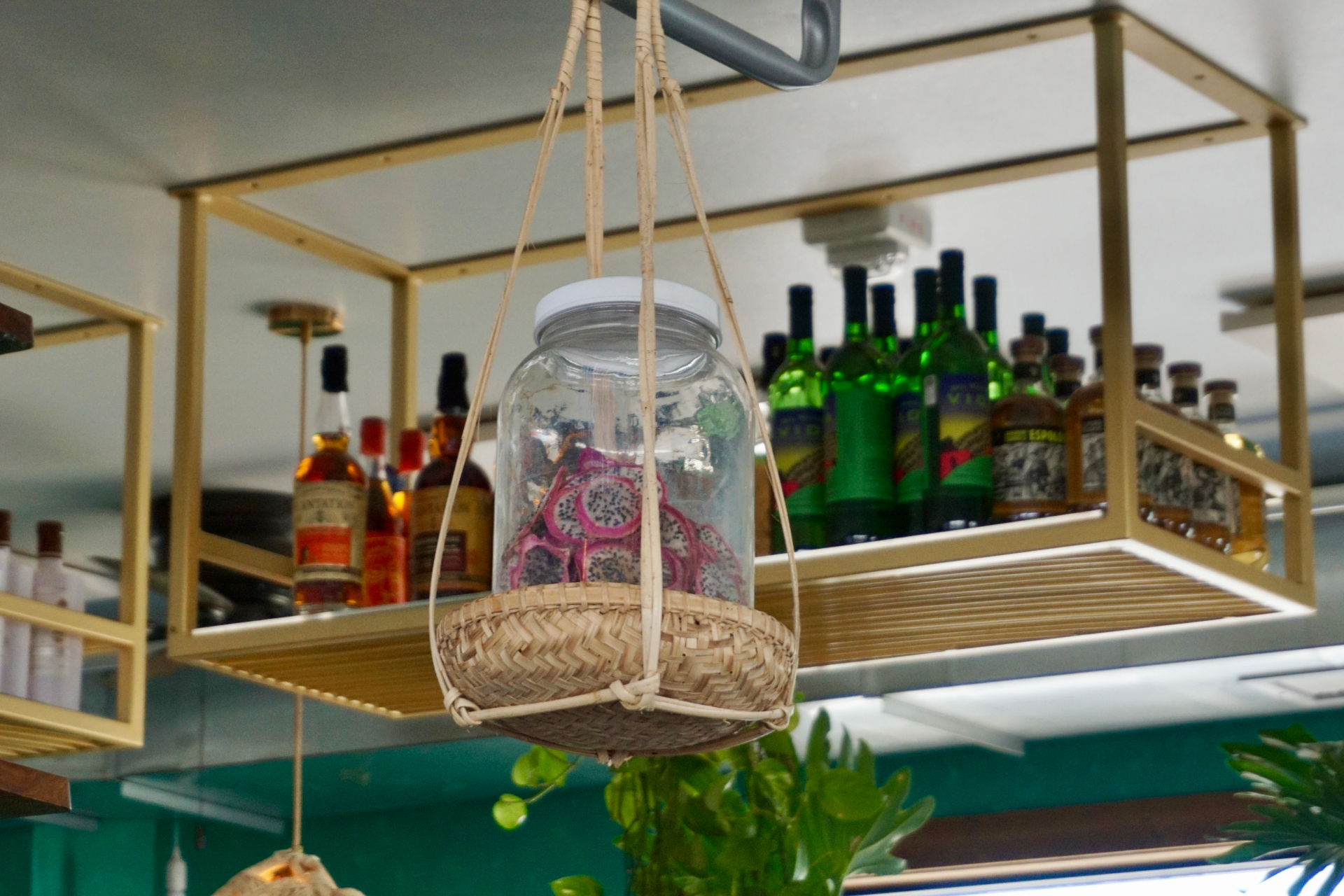
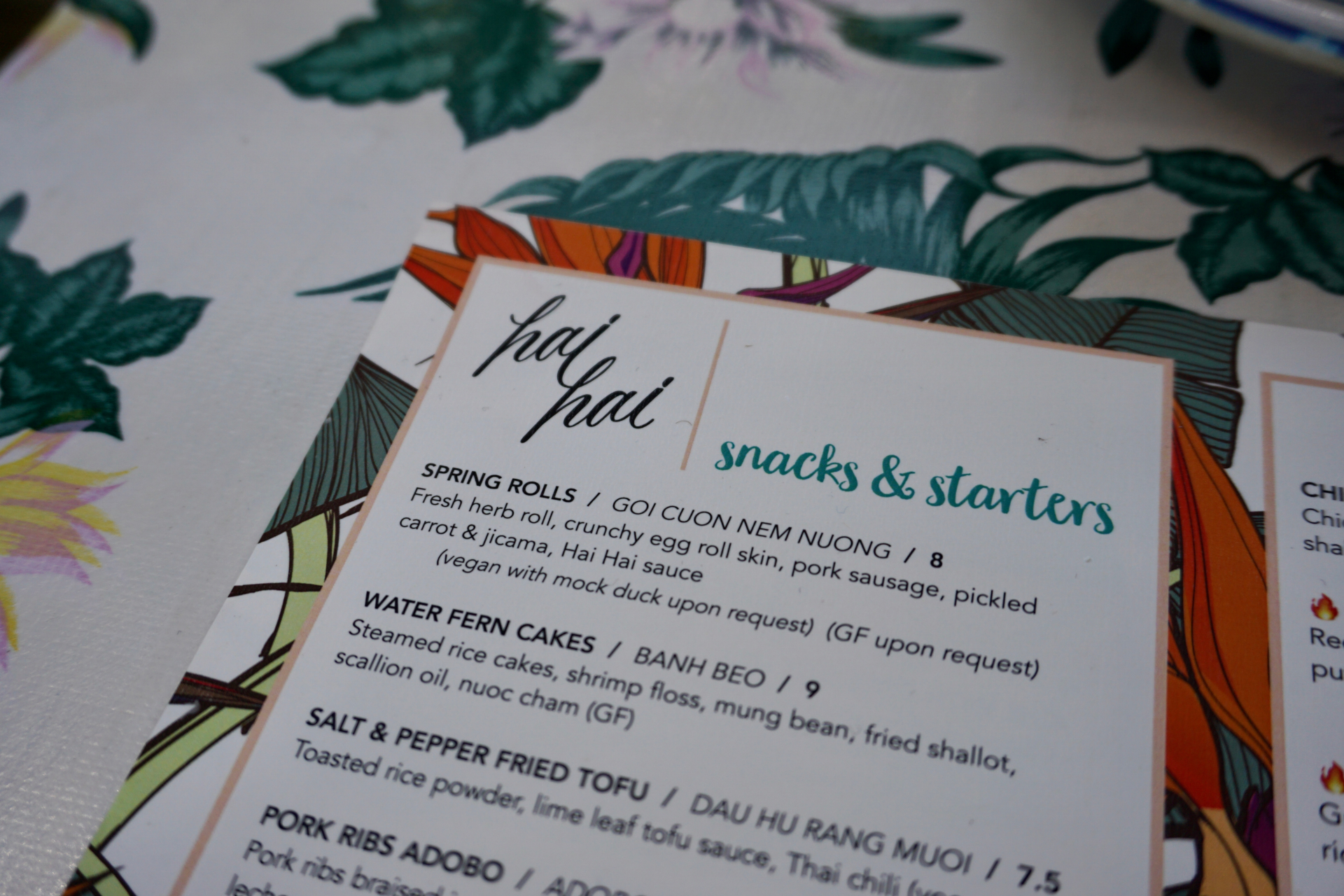
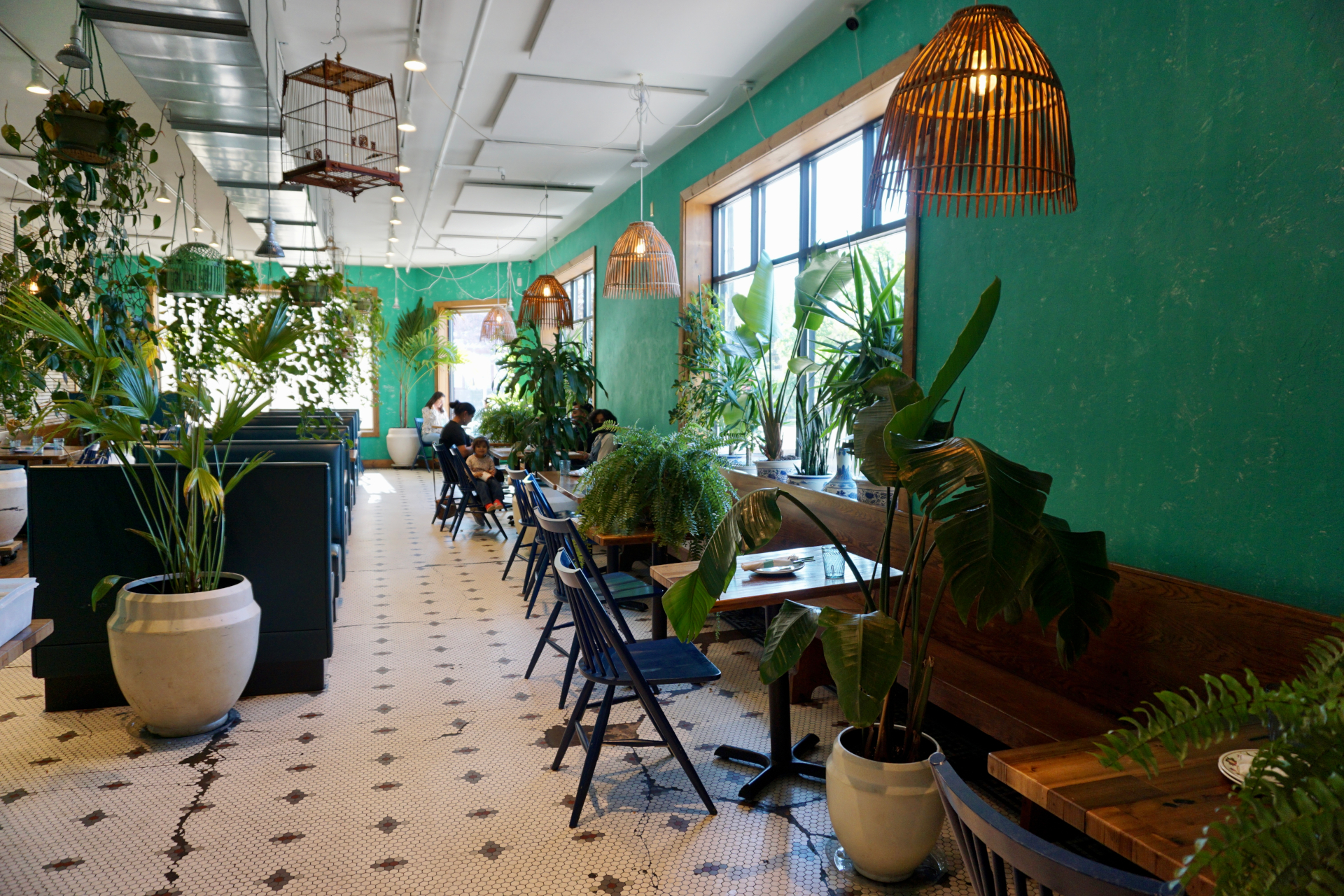
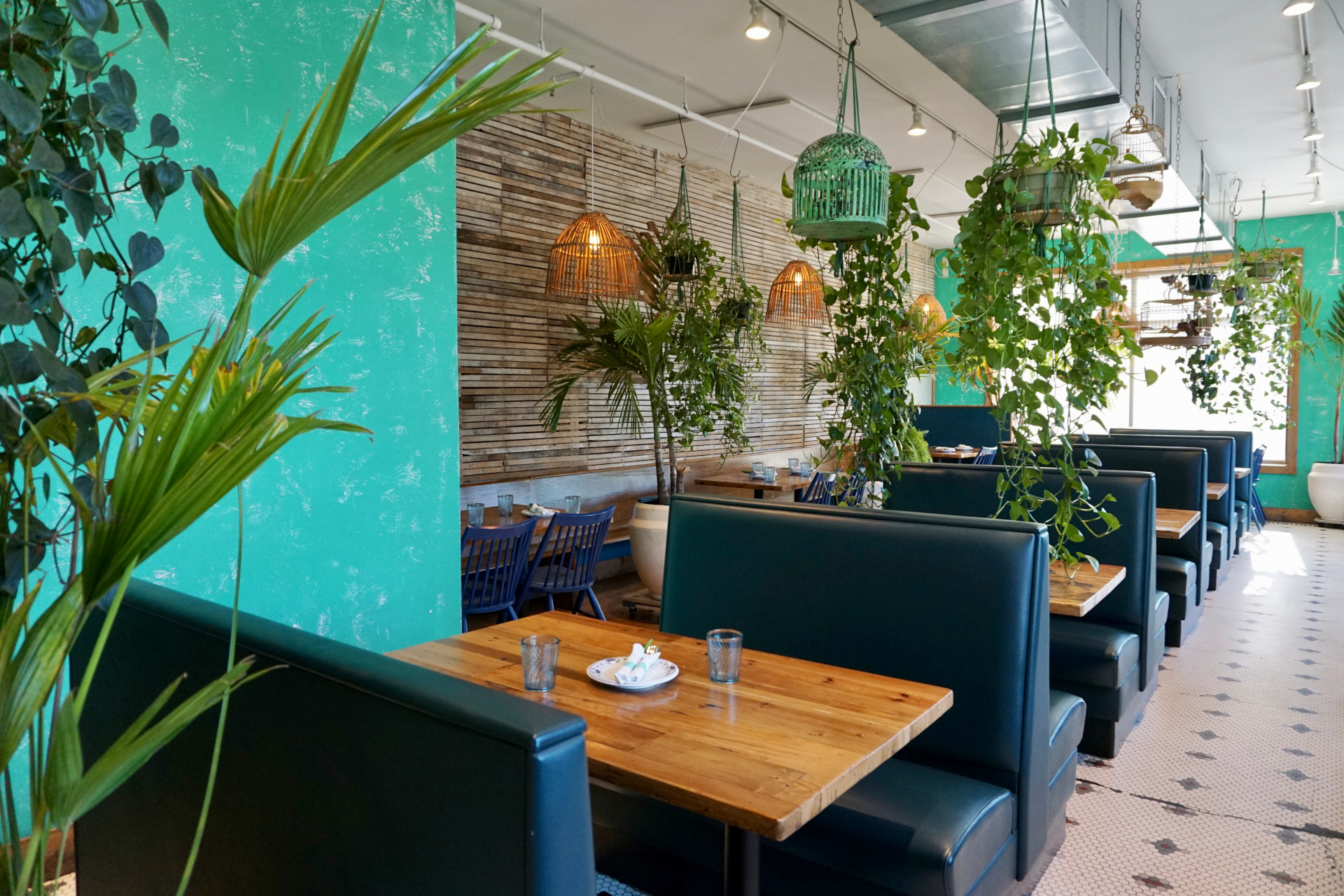
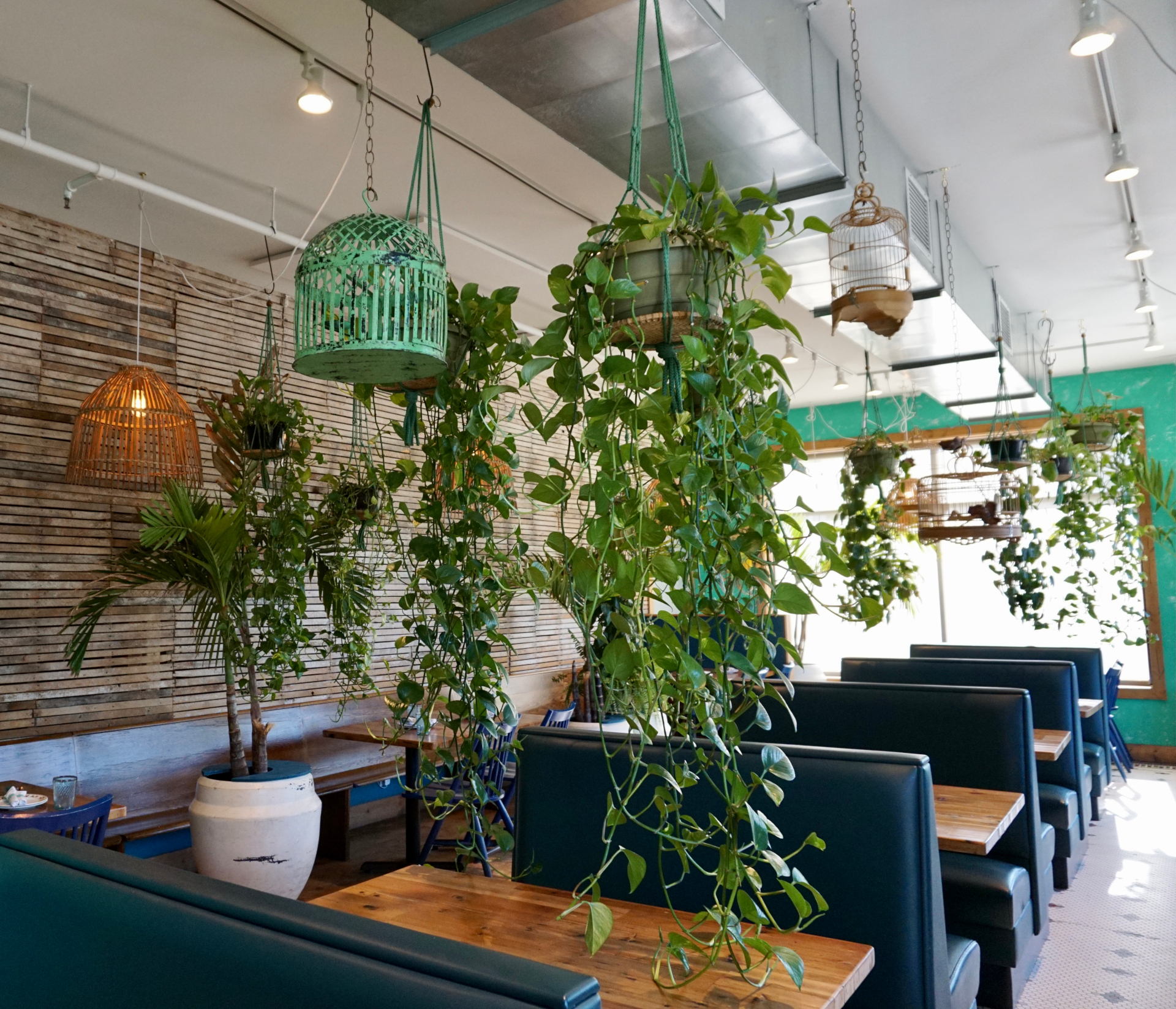
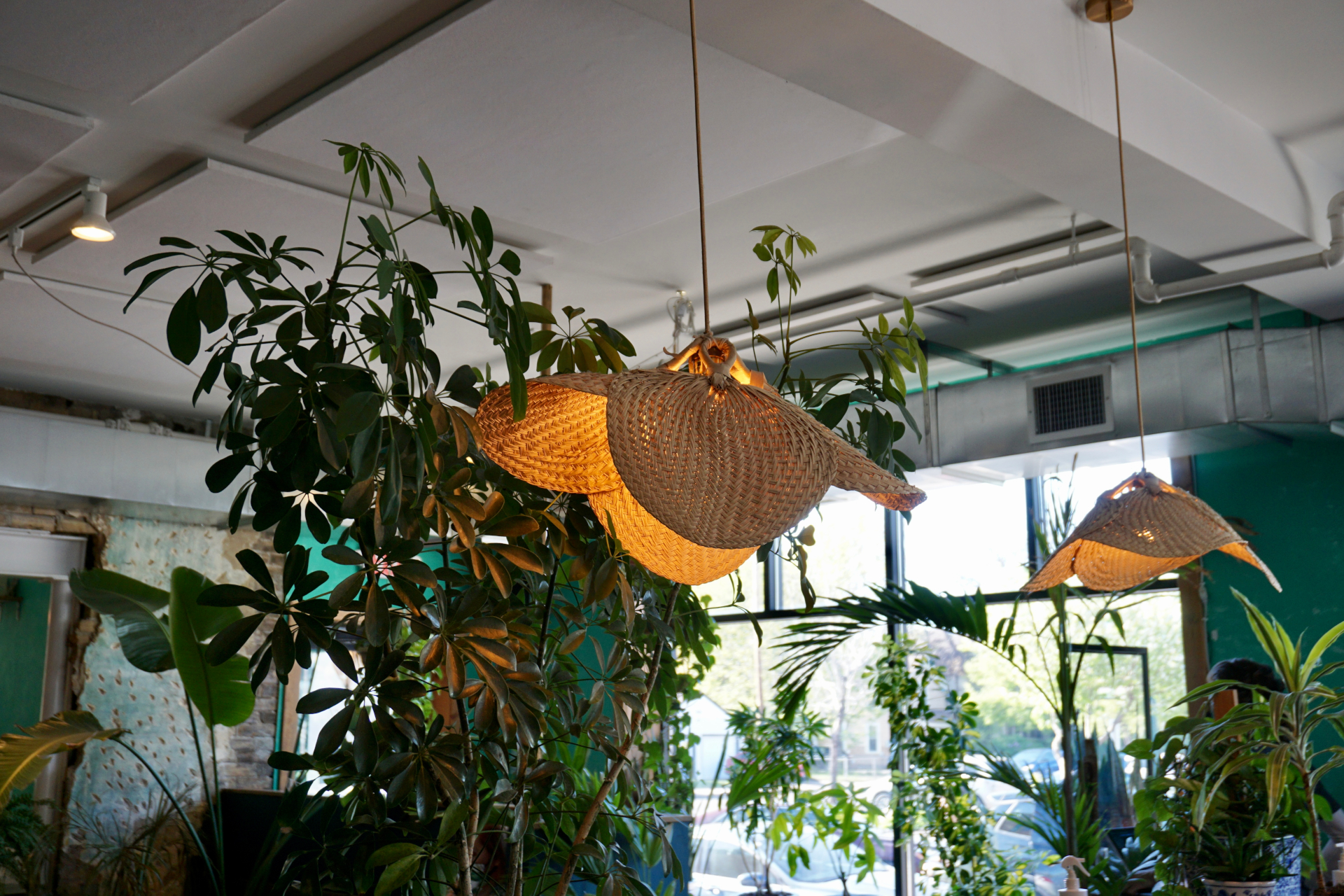

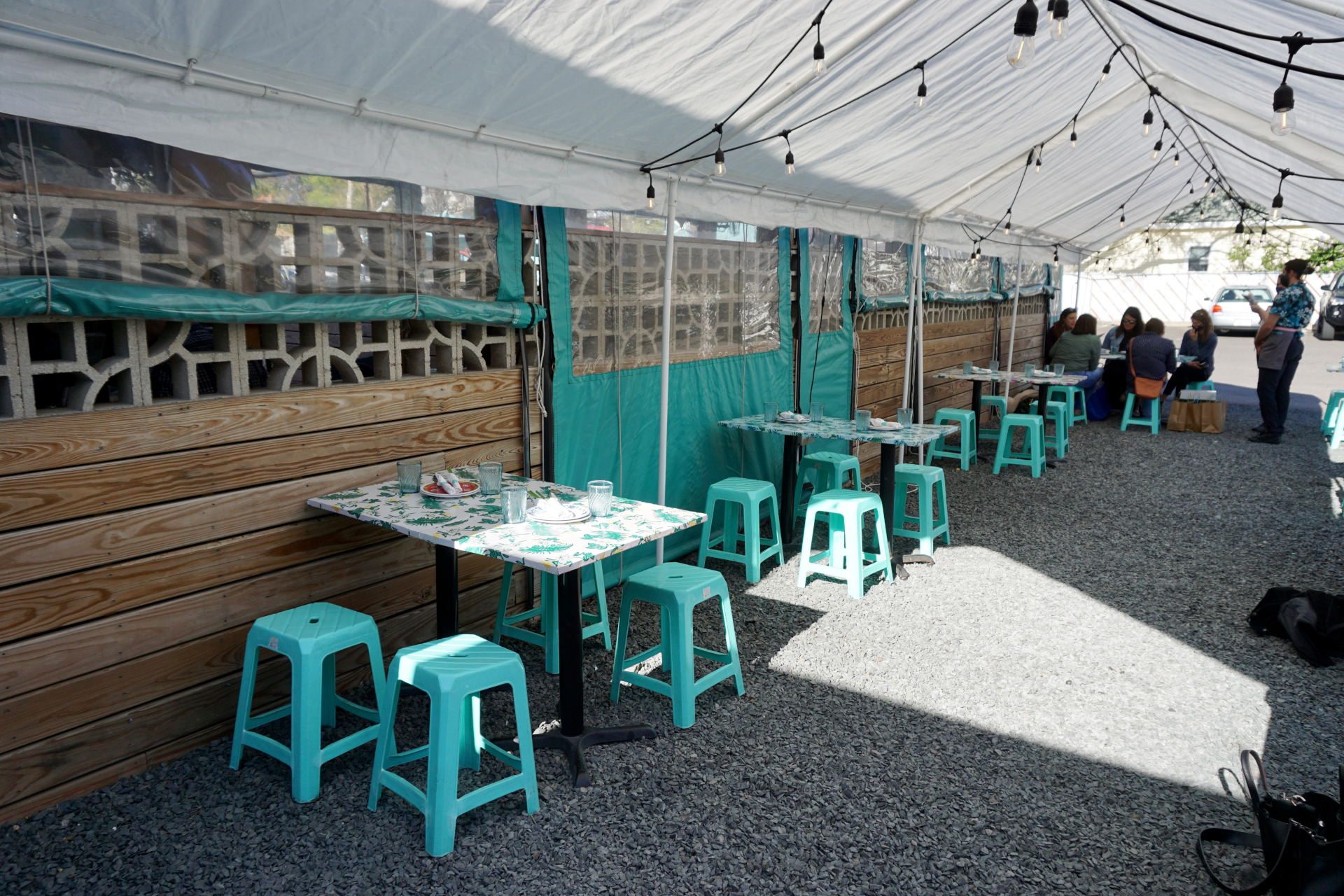
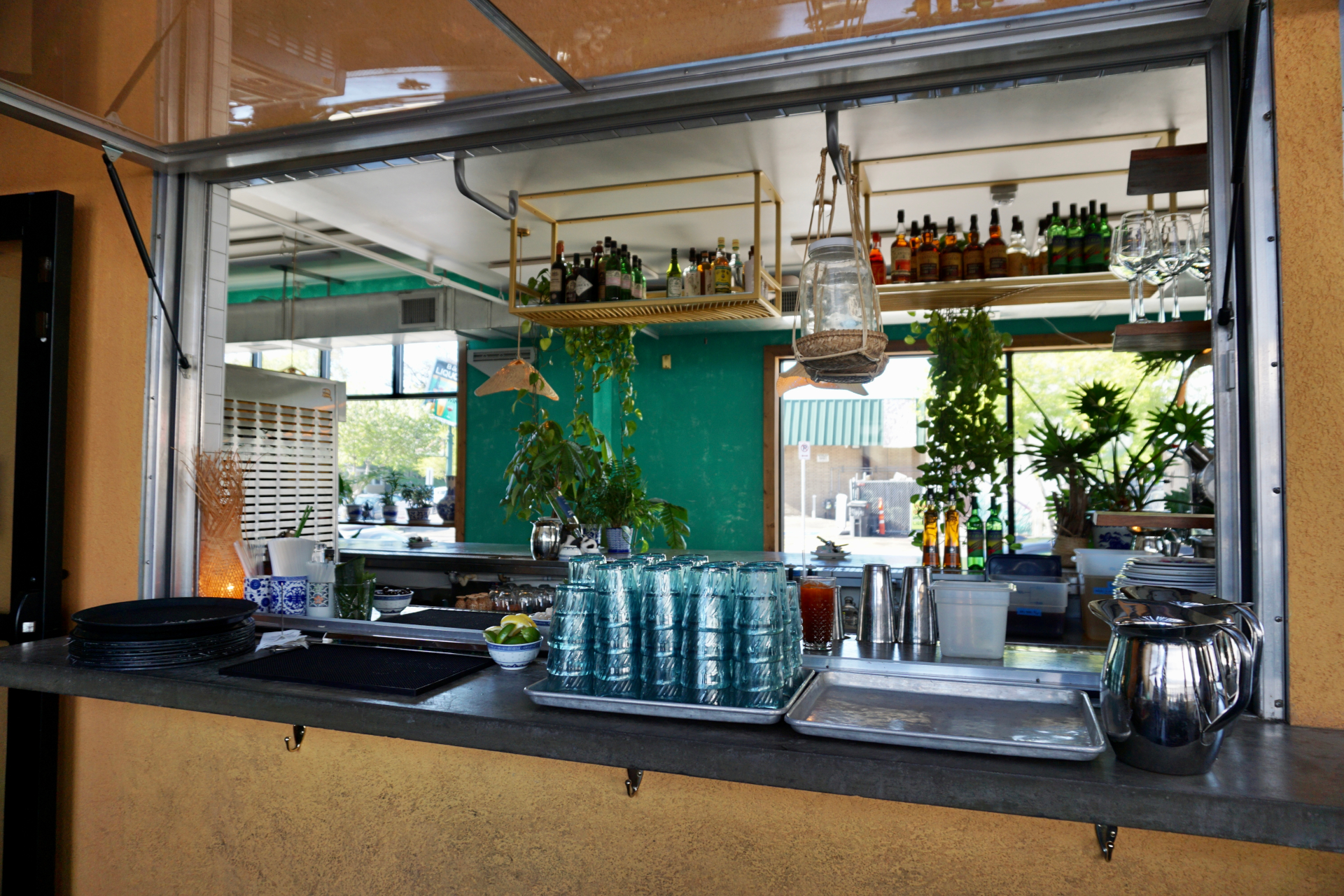
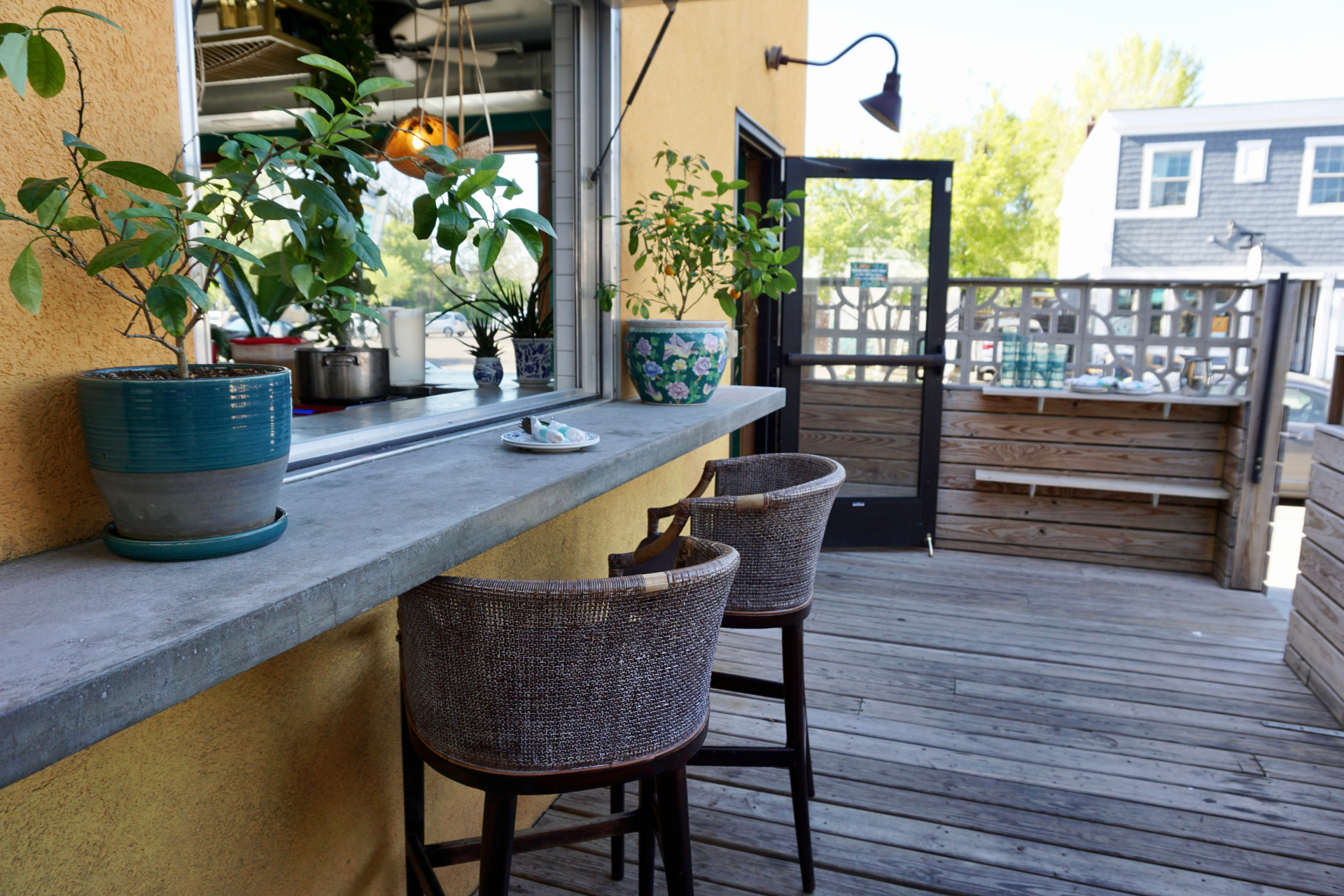
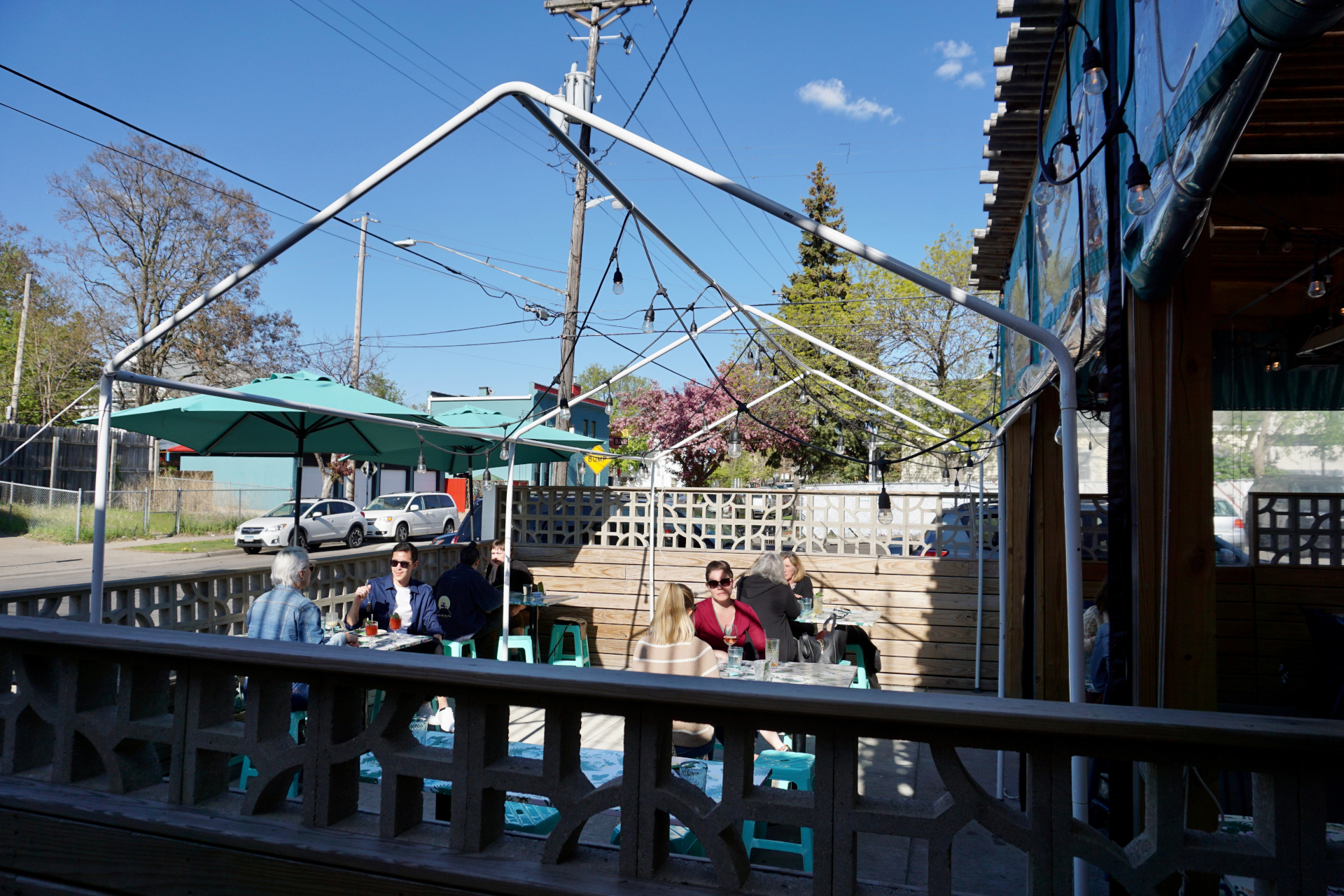
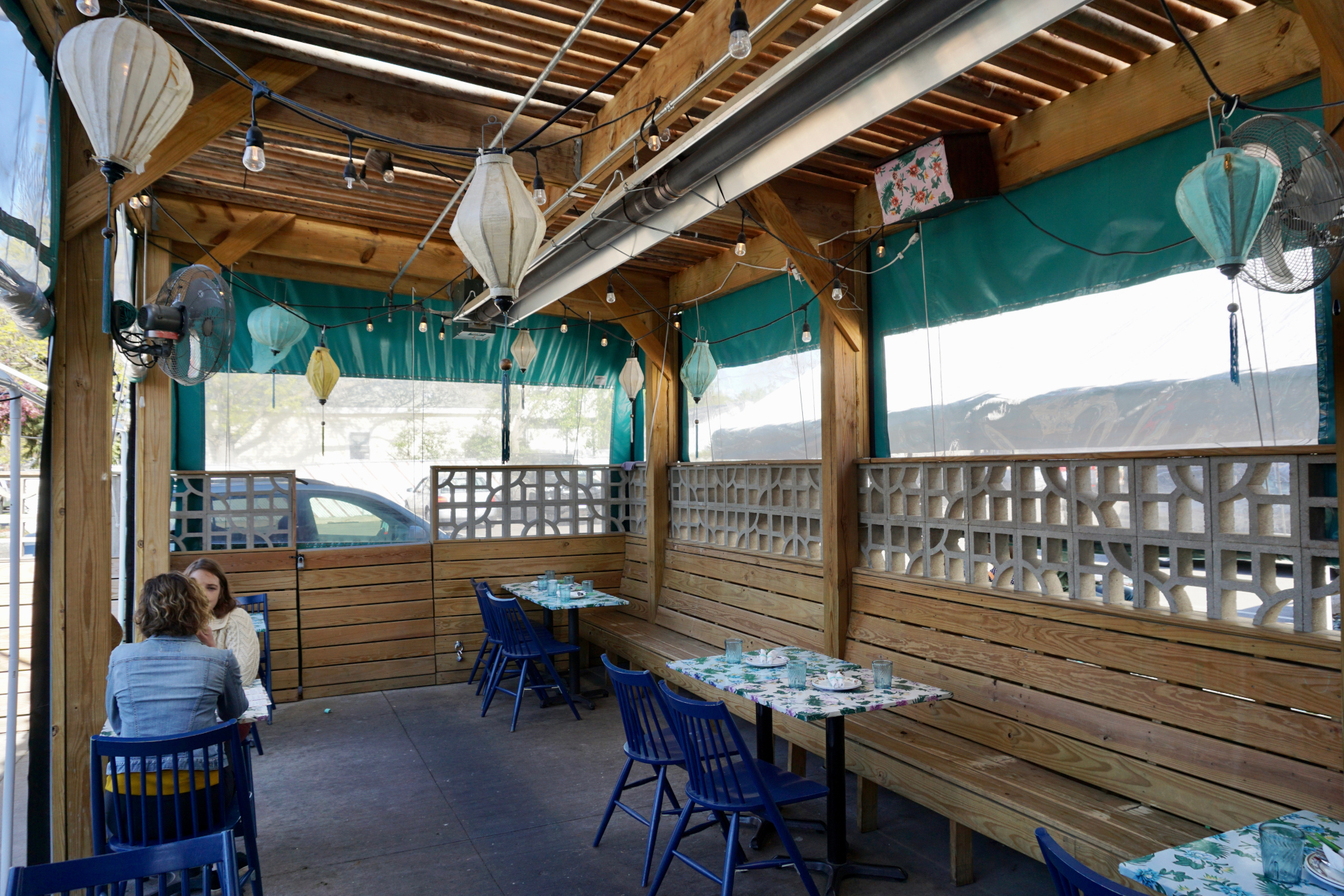
Hai Hai is a Southeast Asian street food restaurant located in Northeast Minneapolis. Now that we are both fully vaccinated, we had the opportunity to dine-in - and luckily, Hai Hai has one of the dreamiest interiors one can imagine. The restaurant emulates a dreamy, tropical, romantic oasis, with potho and ivy plants vining down from the ceiling and woven lanterns. Their large interior is filled with Asian-style decorations, with dragon fruit in jars hanging from woven baskets and blue and white porcelain chinoiserie pots scattered throughout the restaurant. They also have a covered patio and outside patio seating, which is great to hang out on during summer and COVID-19.
The food at Hai Hai is mainly based in Vietnamese cuisine, with elements from Filipino cuisine, Thai cuisine, and Indonesian cuisine. Hai Hai is different from most restaurants we visit. It’s more upscale, attracts more hipster customers, and uses fusion elements. We had excellent wait staff who were perky, attentive, and efficient. During our visit, we ate: Grilled Pork Belly Skewers, Pork Ribs Adobo (Adobong Baboy), Hanoi Sticky Rice (Xoi Man Thap Cam), Asian Cajun Noodles, Vietnamese Crepe (Banh Xeo), Vietnamese Coffee Pot De Creme, and Secret Beach Slushie.
The Filipino-inspired grilled pork belly skewers are served with a small delicious pickled salad of papaya, carrots, red pepper, and ginger. The skewers were our favorite dish by far! The pork was perfect: fatty, juicy, smoky, and tender. When we bit into it, an explosion of flavors touched our tongues. The outside was crispy and the fat of the pork belly melted in your mouth. We enjoyed the good ratio of fat to meat. The rhubarb tocino marinade was both salty and sweet, pairing well with the flavors of the pork belly. The little salad that came with the skewers was delightful - it was slightly spicy and the papaya, carrots, and bell pepper was refreshing. This appetizer is a MUST TRY when visiting Hai Hai.
The Pork Ribs Adobo is Filipino adobo ribs braised in garlic-soy sauce, served on a bed of lechon sauce. The pork itself was well-cooked and the meat fell off the bone. Paulina thought the outside of the pork was a little dry and chewy, but Sandy thought the pork rib was cooked perfectly to her liking. The lechon sauce consists of chicken liver, sugar, and vinegar. The sauce was excessively thick, salty, and umami. The sauce was too strong for our taste buds and we felt like it overpowered the dish. This dish had interesting flavors that adventurous eaters would enjoy.
The Hanoi Sticky Rice dish was colorful and filled with ground pork, pork floss, chinese sausage, mung bean, fried shallot, picked veggies, and cucumber in nuoc cham. The Hanoi Sticky Rice was our favorite entree! Hai Hai’s sticky rice was full of texture. The ground pork and Chinese sausage were soft and chewy, the pork floss was dry, the shallots and pickle vegetables were crunchy, and the cucumbers were refreshing. We loved the nuoc cham sauce - it was slightly sweet mixed with fish sauce and added a lot of freshness to the dish. We were impressed by the rice! The rice was fluffy and chewy, which is a difficult texture to cook. The Hanoi Sticky Rice reminded Paulina of joong, a Chinese sticky rice dumpling wrapped in banana leaf. Unlike joong, Hai Hai’s sticky rice had an excellent balance of vegetables and meat that made this a full, exciting dish.
The Asian Cajun Noodles consisted of thin egg noodles, Cajun seafood sauce, Lao sausage, shrimp, asparagus, pea tendrils, marinated cherry tomatoes, and lime leaf. This dish is not one that you would typically see at an Asian restaurant, as it has elements from both Asian cuisine and Cajun cuisine. Hai Hai was creative to swap andouille sausage (typically found in Cajun seafood boils) for Lao sausage to bring out the Asian flavors. We did not like the texture of the thin egg noodles because they were too soft and thin, resulting in a slimy texture. The Cajun seafood sauce was delicious and spicy, but not too spicy. The shrimp was boiled, but we wished that it was pan seared to give it a smokier flavor and more texture. The Lao sausage was neutral and did not add much flavor. The marinated tomatoes were tasty and we suspected that they were marinated in fish sauce. The lime leaf and pea tendrils brought freshness to this dish, and we enjoyed that it gave the dish texture. Overall, we liked this dish the least and felt the fusion of the Cajun sauce did not go well with the egg noodles.
The Banh Xeo is a turmeric and coconut milk Vietnamese crepe filled with pork belly, shrimp, bean sprouts, and onion. It’s served with lettuce, mint, basil, cilantro, and nuoc cham sauce and garlic chili sauce. The presentation of this dish was beautiful! It came in a woven basket. The server recommended that we cut the crepe into fourths, wrap each crepe in the lettuce and dip it into one of the sauces. Cutting the crepe cleanly was difficult, as the ingredients spread outside the crepe. When we bit into the crepe, it was crunchy and stuffed with the vegetables and meat. The pork belly and shrimp didn’t have too much flavor to them. We thought the bean sprouts and onions were a little oily and slimy. We preferred eating the refreshing nuoc cham sauce over the standard garlic chili sauce. Don’t be deceived that it’s just a crepe - banh xeo is a filling meal!
Vietnamese Coffee Pot De Creme is a custard based in Vietnamese coffee custard, topped with creme fraiche, cocoa nib, and crispy tuile. The pot de creme was a delicious blend of flavors - bitter, tart, yet sweet! It reminded us of the coffee cake rolls that you can find at a Chinese buffet. The bottom of the dessert consisted of a strong, bitter Vietnamese custard. The next layer was creme fraiche, which was a heavy whipped cream with the slight acidity of cream cheese. The top was sprinkled with cocoa nib and crispy tuile, which resembled a crunchy wafe. We loved this dessert and wished there was more!
The Secret Beach Slushie is a mix of Hai Hai’s famous slushies: Koh Coco and Private Island. We couldn’t decide which slushie to get from them, so we decided to get both of them. The Kuh Coco contains rum, coconut milk, pineapple, passion fruit, and Chinese five spice. We loved the refreshing coconut and pineapple in the Kuh Coco. We love sweet cocktails, and the Kuh Coco didn’t disappoint. However, the alcohol was strong! We didn’t drink much during the pandemic, so everything tastes strong right now! The Private Island side consists of dark rum, strawberry, lychee, hibiscus, Aperol, thai basil, and lime. The Private Island tasted like a typical fruit slushie, but the dark rum made it bitter. Overall, these were fun summer drinks and we loved the presentation!
Overall, Hai Hai is a trendy, romantic restaurant that holds up with excellent Asian food. The restaurant has an excellent take on Southeast Asian cuisine and we loved how Hai Hai expanded beyond the imagination of a typical dish and made it their own through infusing interesting ingredients. If you go there, we strongly recommend the Grilled Pork Belly Skewers and the Hanoi Sticky Rice.
We got connected with Hai Hai through unprecedented events. In 2021, Hai Hai started a project, also named Minnesota Rice, that is doing work to combat racism against Asian Americans. The duplicity in the names of our projects and similarity in our missions brought us together to collaborate together for this visit. Christina Nguyen, the owner of Hai Hai, graciously treated us to this visit and we enjoyed it!
























